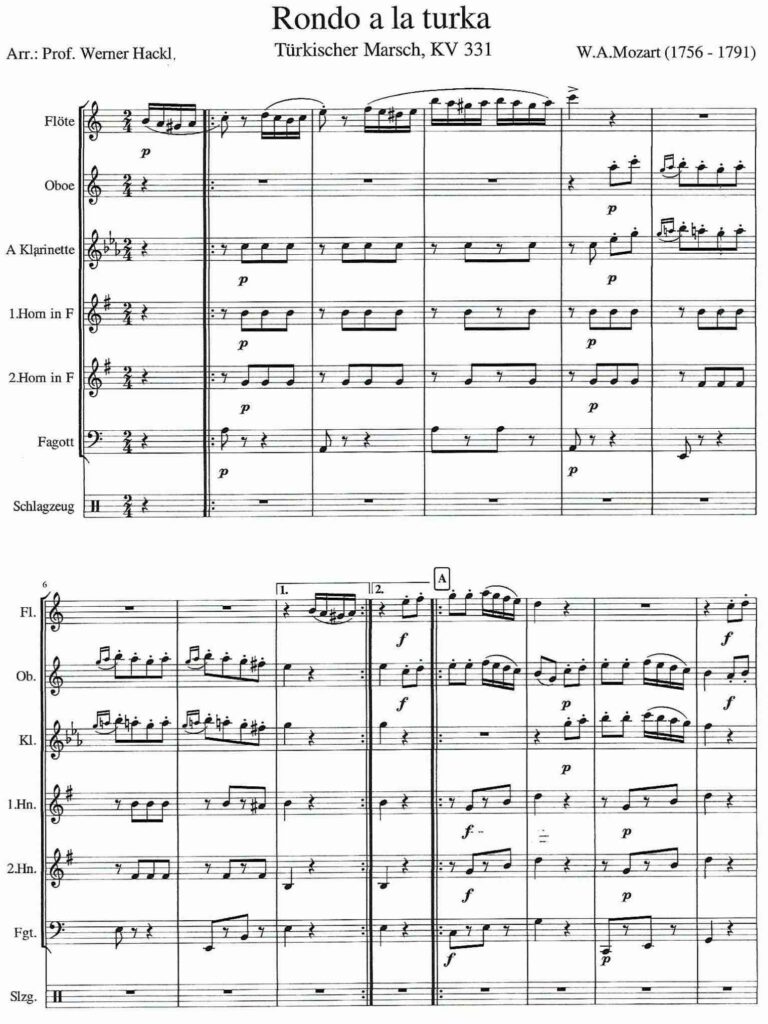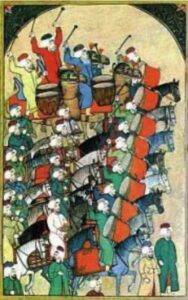Wolfgang Amadeus Mozart (1756-1791) Türkischer Marsch / Rondo a la turka, KV 331

Die Sonate Nr. 11 in A-Dur KV 331 ist eine der bekanntesten Klaviersonaten Wolfgang Amadeus Mozarts, die er 1783 in Wien oder Salzburg komponierte. Das Werk konnte insbesondere durch seinen dritten Satz an Popularität gewinnen; dabei handelt es sich um ein als Türkischer Marsch bekannt gewordenes und mit Alla Turka überschriebenes Allegretto in Rondoform in a-Moll, das in A-Dur endet. In dieser Bearbeitung hat Prof. Hackl das Klavierwerk für die Instrumente eines Bläserquintett aufgeteilt. A la turka ist ein Kompositionsstil, der fordert, dass ein Musikstück nach dem Vorbild der türkischen Janitscharenmusik gespielt werden soll. Eine weitere a la turka-Komposition findet sich in Mozarts Die Entführung aus dem Serail mit dem ‚Marsch der Janitscharen‘. Genau hundert Jahre nach der Zweiten Belagerung Wiens durch die Türken komponierte Mozart diesen „Ohrwurm“.

The Sonata No. 11 in A major KV 331 is one of the best-known piano sonatas by Wolfgang Amadeus Mozart, which he composed in 1783 in Vienna or Salzburg. The work was able to gain popularity in particular through its third movement; it is a rondo-form allegretto in A minor, ending in A major, which became known as the Turkish March and is marked Alla Turka. In this arrangement, Prof. Hackl has divided the piano work for the instruments of a wind quintet. A la turka is a compositional style that demands that a piece of music be played in the style of Turkish Janissary music. Another a la turka composition can be found in Mozart’s Die Entführung aus dem Seraglio with the ‘March of the Janissaries’. Exactly one hundred years after the Second Siege of Vienna by the Turks, Mozart composed this catchy tune.
| sound sample / Tonbeispiel | score/parts PDF download: € 15,- | add to cart / in den Warenkorb |
